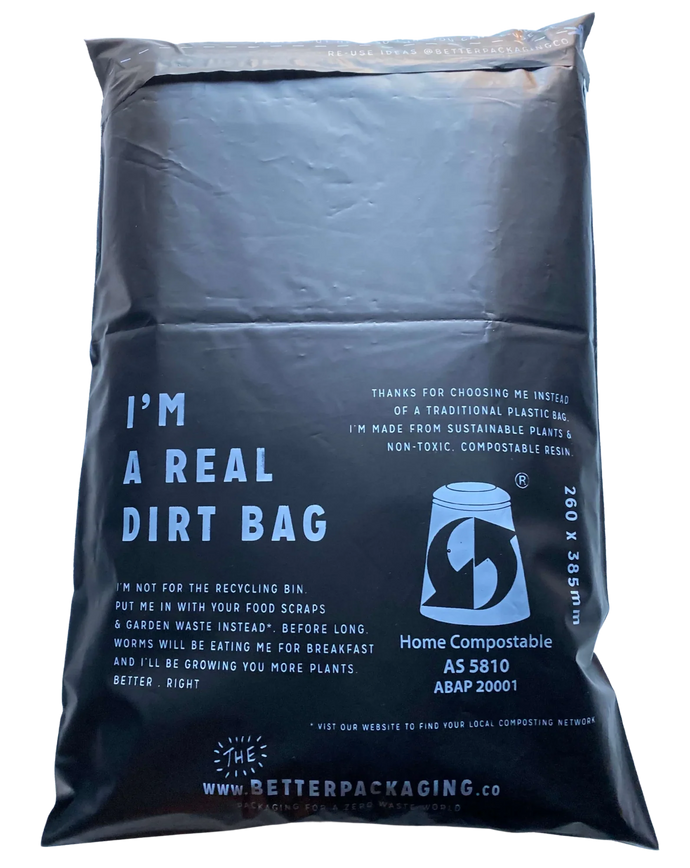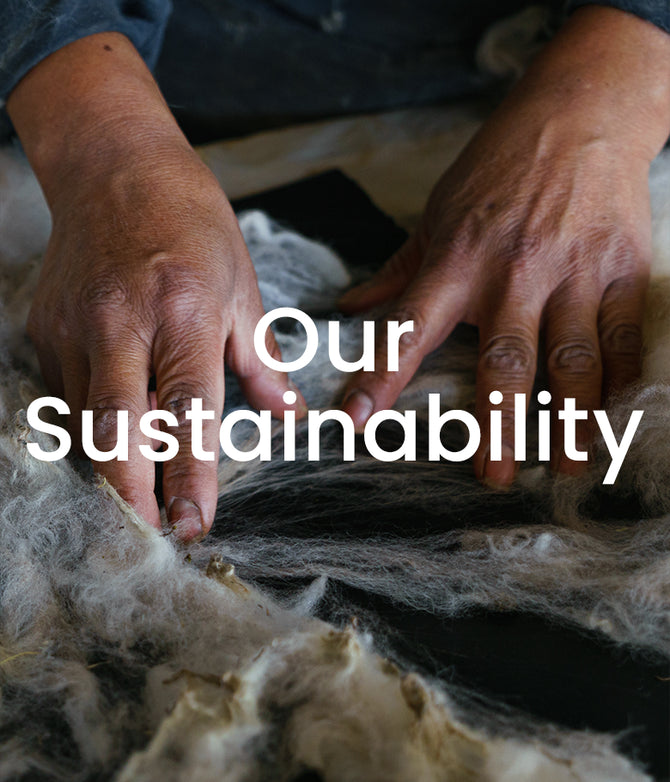
We ditched plastic packaging in 2021
Sustainability and plastic packaging don't go together, which is why we made sure to find an alternative solution to regular plastic bags that take hundreds of years to decompose.
Our mailers are 100% compostable
Since March 2021, we only use compostable bags from Better Packaging Co. to ship our products to our customers worldwide. The bags are made from corn starch, plant-based Polylactide (PLA), and Polybutyrate Adipate Terephthalate (PBAT).
Biodegradable bags protect our products in transit
Internal packaging is mainly used to protect clothing during shipping and storage. Inside our supply chain, we use biodegradable polyethylene bags and as of now, we are on the lookout for a more sustainable alternative.
Biodegradable polyethylene bags require specific conditions to degrade and the best way to dispose of them for proper degradation is to send them to industrial scale composting, as regular compost might not provide the right conditions. They do NOT belong in recyclable plastic waste and, just like most products, do NOT degrade in landfills.
We internally ship within Peru and to our two international distribution centers in the United States and Europe, keeping our internal packaging, and our carbon footprint, minimal.
How to dispose of compostable packaging?
Composting bags are fully biodegradable and will be broken down naturally by microbes in a composting environment without creating microplastics. Make sure to remove the seal and any labels first before placing your bag in your compost. In a home compost, it will biodegrade in 3 to 6 months and can also be commercially composted.
Plastic packaging in numbers: Why we avoid it and why you should too
- The Plastic Project by Surfdome estimates that 90 billion plastic bags and garment covers are used each year in the fashion industry.
- Single-use bags can take 500 years to degrade, releasing toxic chemicals and microplastics into the environment.













